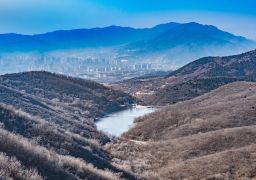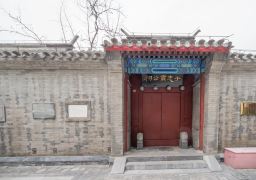Yongchang Fort, also known as the New City, is a fortress from the Ming Dynasty, constructed in 1558 (the 37th year of the Jiajing era). During the Ming Dynasty, the coastal region of Wenzhou was frequently raided by Japanese pirates. The leaders of the Yongqiang anti-pirate forces, Wang Pei and Wang De, sacrificed their lives. Subsequently, the brothers Wang Shuguo and Shudai initiated the construction of this fort to resist the pirates. The fortress is rectangular in shape, measuring 738 meters in length from north to south, 445 meters in width from east to west, with a perimeter of 2366 meters, a wall height of 8 meters, and a base width of 4 meters. It was built with slanted stone blocks and filled with rammed earth. A moat surrounds the castle, and two channels were dug inside, with residents living on either side of the channels, presenting an orderly and impressive view. The castle’s moat is lined with square granite stones, facilitating both water and land transportation, irrigation, and washing. Originally, there were over 100 acres of paddy fields within the fort, which could sustain production in emergencies, ensuring that the military and civilians could be self-sufficient and not be troubled by prolonged sieges, reflecting the careful planning and far-reaching considerations of the time. Yongchang Fort still preserves many ancient residences and ancestral halls, such as the Du Tang Di, Zhuangyuan Mansion, Shengzhi Men Lane, Shi Dafu Temple, Bu Zhengsi Temple, Qingshi Gate Platform, Garden Ancient Well, Dongqiao Bottom No. 40, Imperial Censor Lane No. 12, Dapai Ancestral Hall, Lou Xia Pai Ancestral Hall, and Zhuangyuan Li No. 6, as well as several ancient bridges, all of which hold significant historical and cultural value. The fort is open all year round from 8:00 to 17:00.
Yongchang Fort
Yongchang Fort, also known as the New City, is a fortress from the Ming Dynasty, constructed in 1558[...]









